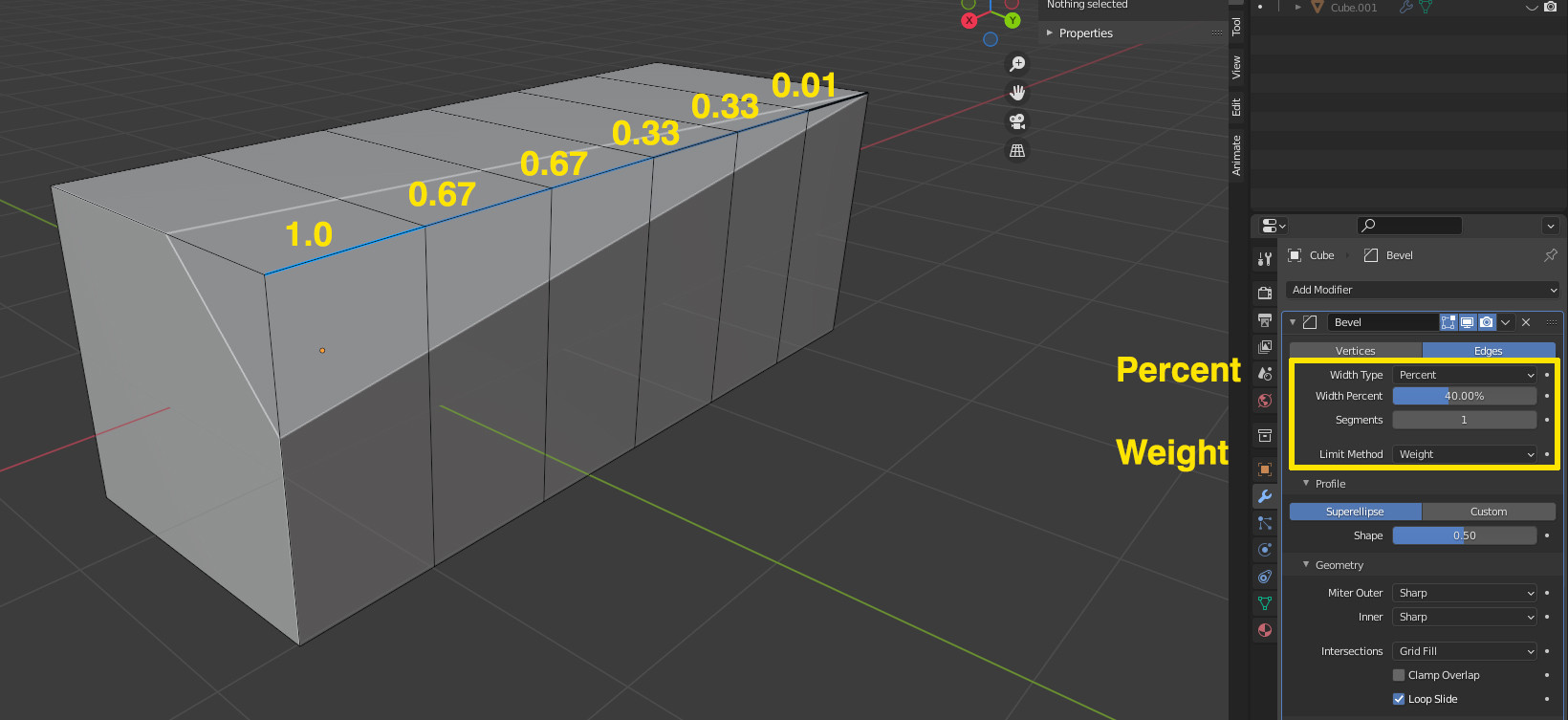I don't think this is possible by weigthing the vertices, but you can assign different weights to edges and the Bevel Modifier will create a decreasing bevel. But you still have to do all manually...
To achieve this, you have set the Width Type to Percent and the Limit Method to Weight (of course, since you want to weight the edges).
In the following example I've got a cuboid separated in 4 segments. I'm beveling one border edge of the cuboid from 1.0 (full bevel) to 0.01 (0 doesn't work very well and gives ugly results). To do this, the first edge gets a bevel weight of 1.0, and the last one 0.01 - now the two edges between them are the "mediating" edges between 1 and (pretended) 0, so they both get the average value 0.5 as they are the middle part. The result looks like this (I've left the segment at 1 so that the bevel is clearly visible):

Here is another example. This time the cuboid is cut in 6 segments. Still the first edge gets 1.0 and the last one 0.01 as bevel weight, but the middle section will again be paired - the two edges next to the 0.01 edge get 1/3 = 0.333, the other two close to the 1.0 edge get 2/3 = 0.667 as weight.

So the principle is, to get a more or less smooth fading of the bevel: if the part to be beveled consists of 2 × n edges, the weights should be paired except for the first and last edge:
0.01
1/n
1/n
2/n
2/n
...
(n-1)/n
1.0
I haven't found a good principle if you have an odd number of edges. But of course you can vary the weights if you don't want/need a perfect smooth linear fade between the first and last edge. Actually that is one of the best reasons to have more segments to adjust (if it's not determined by an already existing mesh in the first place).
So to just have a smooth, even fade from one side to the other you need just two edge: one with a bevel weight of 1.0 and the other with 0.01, this way it's a linear interpolation from one end to the other:




